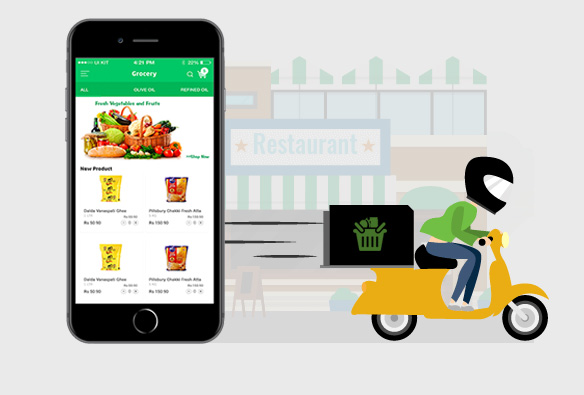Step-by-Step Guide to Building a User-Friendly Grocery Delivery App

In today’s fast-paced world, convenience is key. With the rise of technology, people now expect services to be available at their fingertips. One such service that has gained immense popularity is grocery delivery apps. In this step-by-step guide, we’ll walk you through the process of building a user-friendly grocery delivery app that will delight your customers and keep them coming back for more.
1. Research and Planning
Before diving headfirst into app development, it’s crucial to conduct thorough research and planning. Start by identifying your target audience and understanding their needs and preferences. What are their shopping habits? What features would they expect from a grocery delivery app? Conduct market research to analyze your competitors and identify gaps in the market that your app can fill. Once you have a clear understanding of your target audience and market landscape, create a detailed plan outlining the features, functionality, and design of your app.
2. Choose the Right Development Partner
Building a successful grocery delivery app requires technical expertise and experience in app development. Instead of trying to tackle the project on your own, consider partnering with a reputable Grocery Delivery App development company. Look for a company that has a proven track record of developing successful apps and specializes in on-demand delivery services. By partnering with the right development company, you can leverage their expertise to bring your app idea to life quickly and efficiently.
3. Define Key Features
The success of your grocery delivery app hinges on its features and functionality. Start by defining the core features that are essential for a seamless user experience. These may include:
- User Registration and Login: Allow users to create accounts and log in using their email or social media accounts.
- Browsing and Search Functionality: Enable users to browse through a wide selection of grocery items and search for specific products.
- Product Details: Provide detailed information about each product, including images, descriptions, prices, and nutritional information.
- Shopping Cart: Allow users to add items to their shopping cart and modify quantities as needed.
- Checkout and Payment: Streamline the checkout process with secure payment options, such as credit/debit cards, mobile wallets, or cash on delivery.
- Order Tracking: Keep users informed about the status of their orders with real-time tracking updates.
- Push Notifications: Send timely notifications to users about order confirmations, delivery updates, and promotional offers.
4. Focus on User Experience (UX)
A user-friendly interface is essential for the success of your grocery delivery app. Focus on creating a seamless and intuitive user experience that makes it easy for customers to find what they need and place orders effortlessly. Pay attention to factors such as navigation, layout, and visual design to ensure that your app is both aesthetically pleasing and functional. Conduct usability testing to gather feedback from real users and identify areas for improvement.
5. Ensure Seamless Integration with Third-Party Services
To provide a comprehensive grocery delivery experience, your app will need to integrate with various third-party services, such as payment gateways, mapping APIs, and inventory management systems. Work closely with your development partner to ensure seamless integration with these services, allowing for smooth transactions and accurate order fulfillment.
6. Implement Robust Security Measures
Security is paramount when it comes to handling sensitive customer data and processing financial transactions. Implement robust security measures to protect user information and ensure compliance with data protection regulations. Utilize encryption techniques to secure data transmission and storage, and implement authentication and authorization protocols to prevent unauthorized access to user accounts.
7. Test, Launch, and Iterate
Before launching your grocery delivery app to the public, it’s essential to conduct thorough testing to identify and address any bugs or issues. Test the app across different devices and operating systems to ensure compatibility and performance. Once you’re confident that the app is ready for launch, release it to the app stores and promote it to your target audience. Gather feedback from users and continuously iterate based on their input to improve the app’s functionality and user experience over time.
Conclusion
Developing a user-friendly grocery delivery app requires careful planning, strategic execution, and a focus on delivering value to your customers. We also provide the top seo services for locksmiths at IndeedSEO. If want to enhance the online presence of your website then contact with IndeedSEO. By following the steps outlined in this guide and partnering with the right development company, you can create a successful app that meets the needs of today’s busy consumers. With a seamless user experience, robust features, and a commitment to customer satisfaction, your grocery delivery app has the potential to become a staple in households around the world.
3.5









